

Flitzer

In March of 1943 Focke-Wulf initiated a series of design studies for jet fighters. Three designs were chosen for mock-up construction. One of these, Design 6, was later revised as Project VII and given the code name Flitzer (German for madcap). According to some sources this it was actually assigned and RLM designation of Fw 226 but I have not seen any thing of this other than what Revell stated in the instructions for their 1/72 scale model.
The Flitzer had wings with a moderated sweep back and nearly straight trailing edges with twin booms supporting a high set tailplane. The proposed power plant was the Heinkle HeS 011A augmented by a Walter rocket motor mounted below the jet. The project was well advanced with a full scale model and some prototype sub assemblies having been completed when attention was shifted to a swept wing fighter for the RLM's emergency fighter competition. The aircraft bore a striking resemblance to the De Havilland Vampire.
The Kit
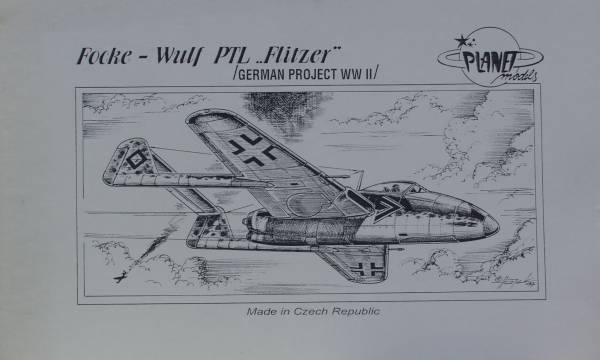
The Planet Models kit comes in a dreaded end flap box with a typical Planet Models pencil sketch of the aircraft on the front of the box. Inside the box the resin parts are contained in a compartmentalized bag to protect them during shipment. The parts are molded in a tan colored resin and feature recessed panel lines. The parts have a smooth finish and I had to look quite a while to find the couple of pin holes that I could locate. The parts are very flash free for a resin kit. None of the parts appeared have have any warpage problems. The fuselage is hollow molded while the wings are one piece. The panel lines are fine and uniform as well as continuous and the control surfaces are fixed and have deeper indentations. The cockpit isn't bad but the seat needs a harness and belts and a few bits and pieces of photoetch leftovers from other sets would help it out a bit. Unfortunately the landing gear does not include an over molded support so they will fail with age. It would not be all that hard to scratch these out of wire and tubing. The clear part is vacuformed and you only get one so cut carefully. It is clear and has well defined frame lines. The wings just butt join to the fuselage so some extra support there would be a good idea as well. Assembling the tail may require some fixturing or a couple extra hands. All together there are 33 resin pieces and one vacuformed part for a total of 34 pieces. See photos below.
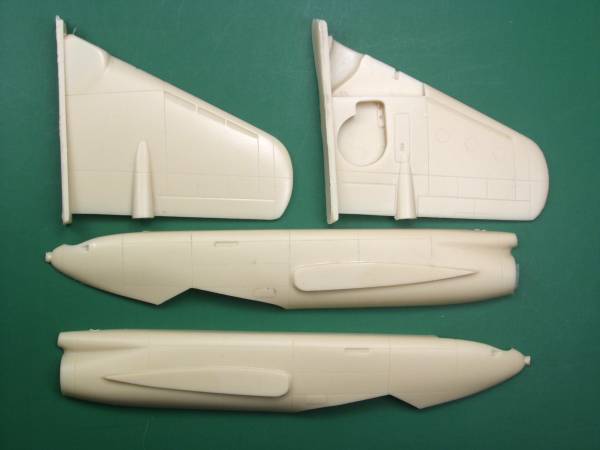
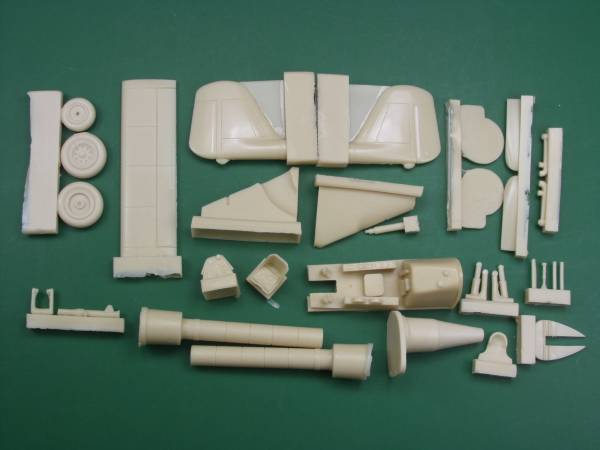
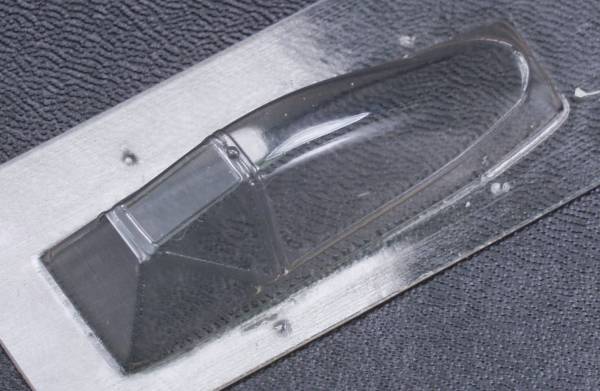
The decals include markings for one generic aircraft. They appear thin and in register and include the assemble them yourself swastikas. See below.
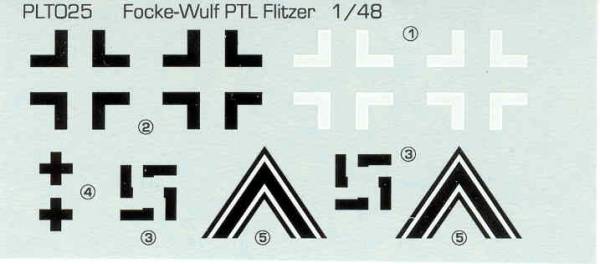
The instructions are on a single A4 sheet printed on both sides. One side had history and painting / marking diagram the other has assembly diagrams with no written instructions.
Conclusions
This looks to be a very nice kit. The resin parts are very well done and apart from removing the casting blocks require very little clean up. Assembling the tail may be challenging but I could be wrong. I would recommend it as a first resin kit to someone thinking of trying one and have no reservations recommending it to modelers with experience with resin kits.
Links to kit build or reviews
A review of the kit can be found here.
References
Back to the POST WW II Jets page
Updated 10/14/07